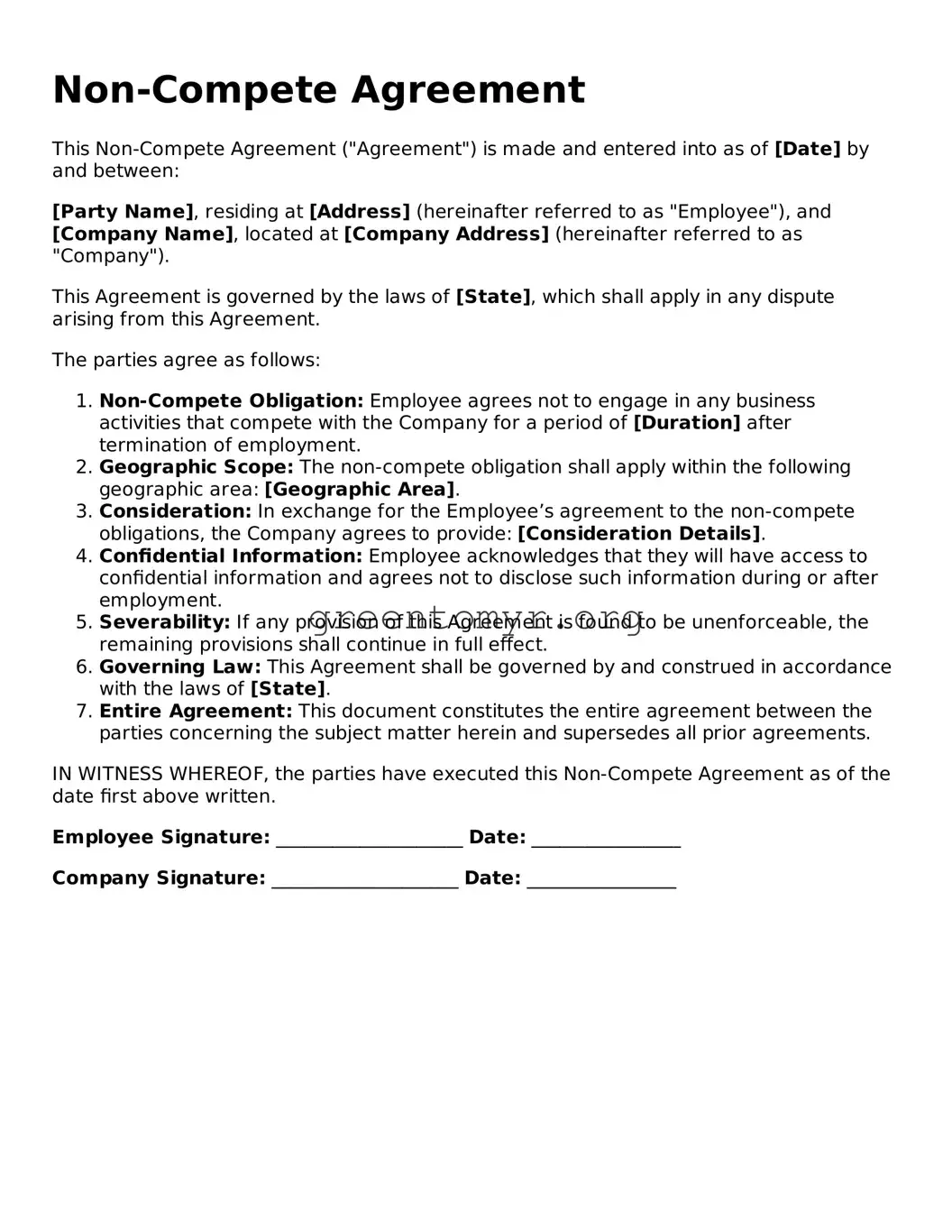Non-Compete Agreement
This Non-Compete Agreement ("Agreement") is made and entered into as of [Date] by and between:
[Party Name], residing at [Address] (hereinafter referred to as "Employee"), and [Company Name], located at [Company Address] (hereinafter referred to as "Company").
This Agreement is governed by the laws of [State], which shall apply in any dispute arising from this Agreement.
The parties agree as follows:
- Non-Compete Obligation: Employee agrees not to engage in any business activities that compete with the Company for a period of [Duration] after termination of employment.
- Geographic Scope: The non-compete obligation shall apply within the following geographic area: [Geographic Area].
- Consideration: In exchange for the Employee’s agreement to the non-compete obligations, the Company agrees to provide: [Consideration Details].
- Confidential Information: Employee acknowledges that they will have access to confidential information and agrees not to disclose such information during or after employment.
- Severability: If any provision of this Agreement is found to be unenforceable, the remaining provisions shall continue in full effect.
- Governing Law: This Agreement shall be governed by and construed in accordance with the laws of [State].
- Entire Agreement: This document constitutes the entire agreement between the parties concerning the subject matter herein and supersedes all prior agreements.
IN WITNESS WHEREOF, the parties have executed this Non-Compete Agreement as of the date first above written.
Employee Signature: ____________________ Date: ________________
Company Signature: ____________________ Date: ________________
